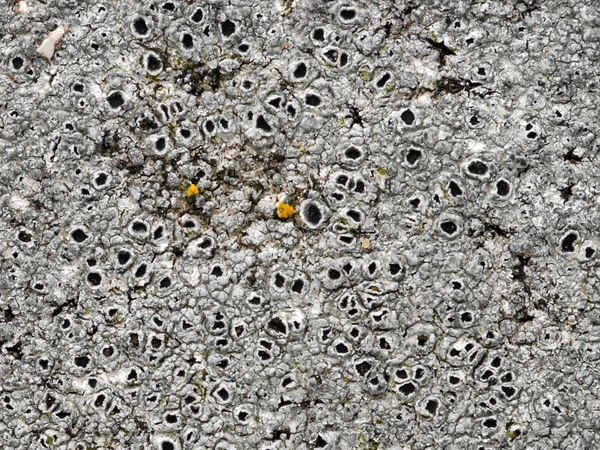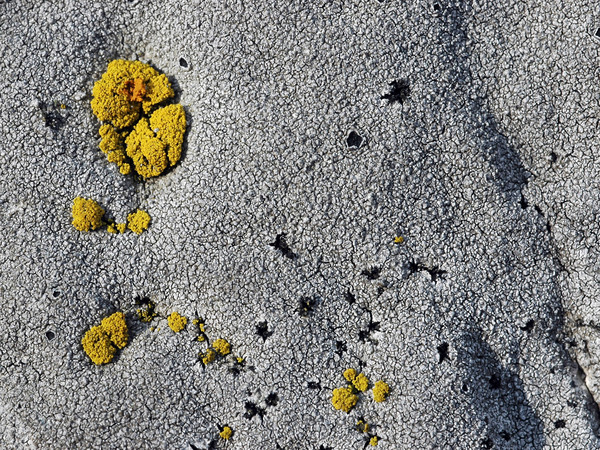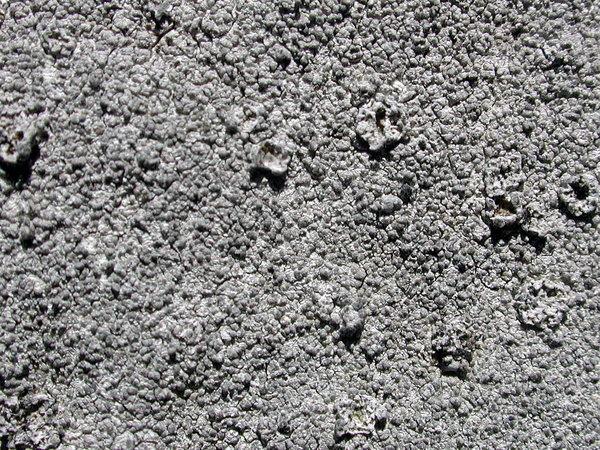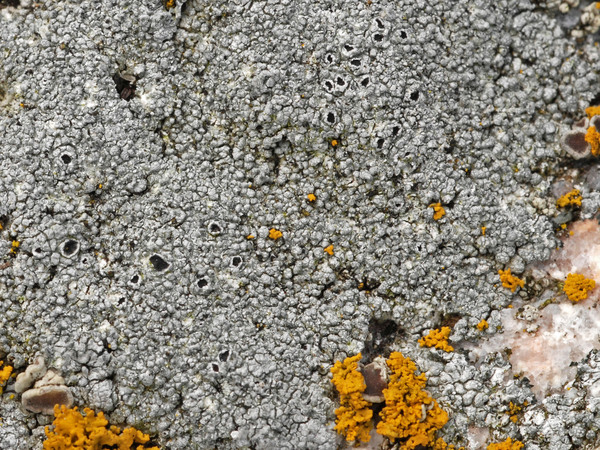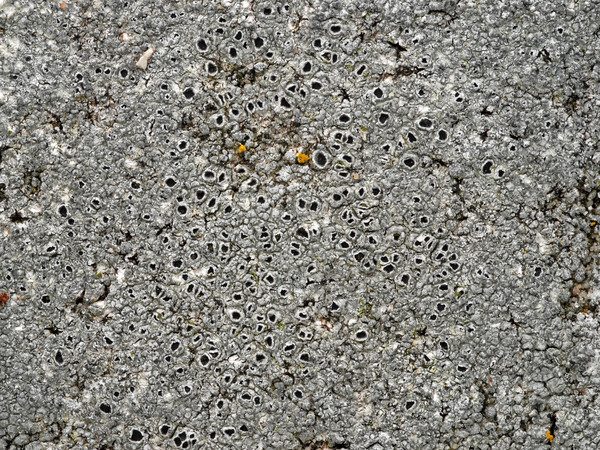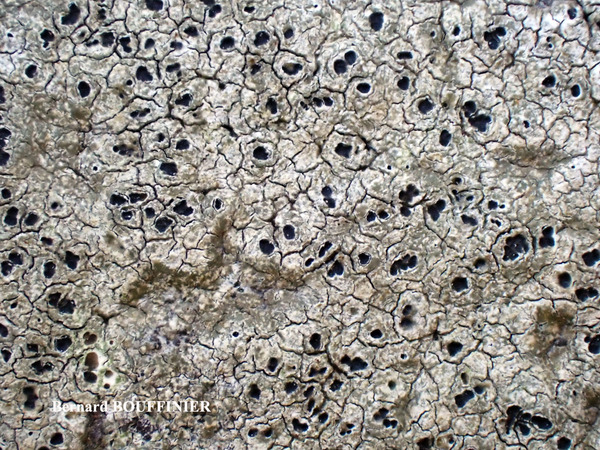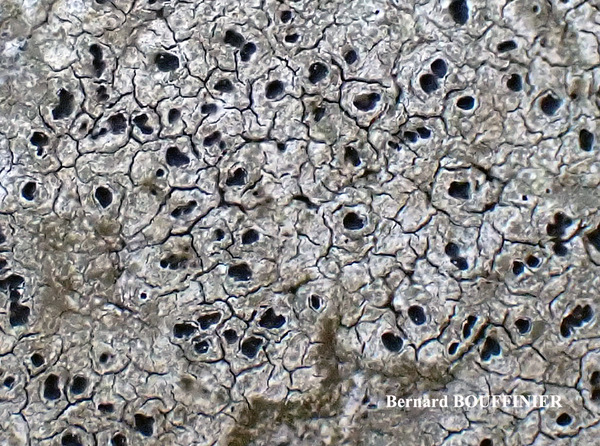Circinaria leprosescens (Sandst.) A. Nordin, Savić & Tibell
Mycologia, 102: 1346, 2010. Basionym: Lecanora leprosescens Sandst. - Verh. bot. Ver. Prov. Brandenb., 45: 131, 1904.
Synonyms: Aspicilia leprosescens (Sandst.) Hav.
Distribution: C - Sar (B-189487).
Description: Thallus crustose, episubstratic, 0.2-0.5 mm thick, at first continuous, then rimose-areolate, pale grey to blue-grey, often delimited by a dark prothallus, the areoles slightly convex, often ascending at the edges and resembling minute squamules, finally turning into grey to brown, globulose (and then soredia-like) or flattened schizidia which may cover the whole thallus. Cortex 20-25 µm thick; medulla white, I-. Apothecia usually scarce, aspicilioid, 1-2 per areole, round, 0.3-1 mm across, with an initially deeply concave, then flat, epruinose disc, and a thin, often poorly evident thalline margin which is often paler than thallus. Proper exciple poorly developed, colourless, extending below the hymenium; epithecium olive-green or olive-brown, N+ bright green, K+ brown-red; hymenium colourless, 130-170 µm high; paraphyses coherent, branched, 1.5-2.5 µm thick at mid-level, the apical cells up to 3.5 µm wide; hypothecium colourless, 40-50 µm high. Asci (4-)6(-8)-spored, clavate, the thin outer coat K/I+ blue, the wall and apical dome K/I-. Ascospores 1-celled, hyaline, subglobose to broadly ellipsoid, 14-30 x 7-16 µm. Pycnidia black, immersed. Conidia thread-like, curved, 18-25 x c. 1 µm. Photobiont chlorococcoid. Spot tests: cortex and medulla K-, C-, KC-, P-, UV-. Chemistry: thallus with aspicilin.
Note: this isidiate-sorediate species growing on siliceous rocks near the coast has been reported from several localities in the Mediterranean Region, but also from North America and East Asia, and is common along the Atlantic coasts of France and those of the North Sea (Roux in litt.).
Growth form: Crustose
Substrata: rocks
Photobiont: green algae other than Trentepohlia
Reproductive strategy: mainly asexual, by soredia, or soredia-like structures (e.g. blastidia)
Taxon bound to maritime-coastal situations
Commonnes-rarity: (info)
Alpine belt: absent
Subalpine belt: absent
Oromediterranean belt: absent
Montane belt: absent
Submediterranean belt: absent
Padanian area: absent
Humid submediterranean belt: absent
Humid mediterranean belt: extremely rare
Dry mediterranean belt: extremely rare
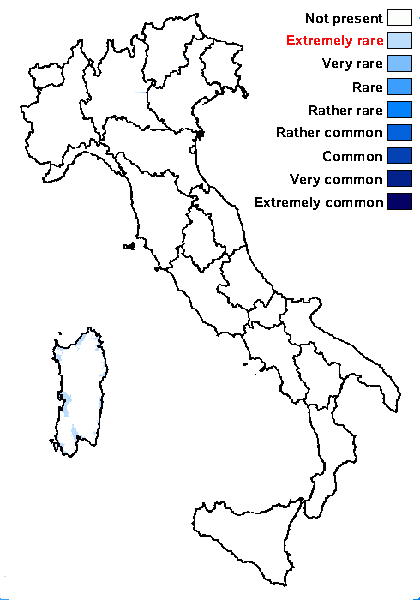
Predictive model
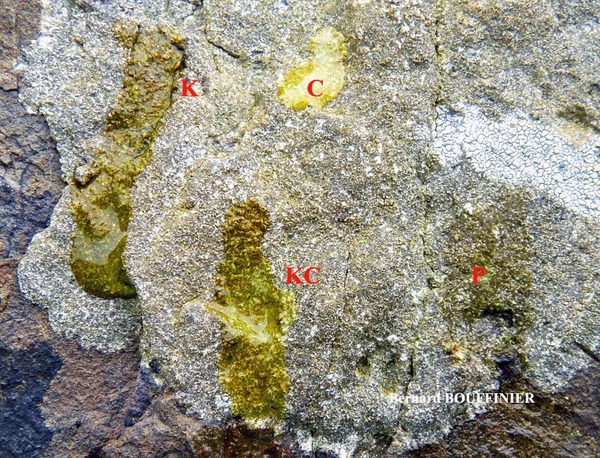
Bernard Bouffinier - Source: http://www.lichensmaritimes.org/index.php?task=fiche&lichen=27&lang=en
France, Argol

Bernard Bouffinier - Source: http://www.lichensmaritimes.org/index.php?task=fiche&lichen=27&lang=en
France, Argol

Bernard Bouffinier - Source: http://www.lichensmaritimes.org/index.php?task=fiche&lichen=27&lang=en
France, Le Passag

Bernard Bouffinier - Source: http://www.lichensmaritimes.org/index.php?task=fiche&lichen=27&lang=en
France, Abbaye de Beauport
Growth form: Crustose
Substrata: rocks
Photobiont: green algae other than Trentepohlia
Reproductive strategy: mainly asexual, by soredia, or soredia-like structures (e.g. blastidia)
Taxon bound to maritime-coastal situations
Commonnes-rarity: (info)
Alpine belt: absent
Subalpine belt: absent
Oromediterranean belt: absent
Montane belt: absent
Submediterranean belt: absent
Padanian area: absent
Humid submediterranean belt: absent
Humid mediterranean belt: extremely rare
Dry mediterranean belt: extremely rare

Predictive model

Bernard Bouffinier - Source: http://www.lichensmaritimes.org/index.php?task=fiche&lichen=27&lang=en
France, Argol

Bernard Bouffinier - Source: http://www.lichensmaritimes.org/index.php?task=fiche&lichen=27&lang=en
France, Argol

Bernard Bouffinier - Source: http://www.lichensmaritimes.org/index.php?task=fiche&lichen=27&lang=en
France, Le Passag

 INDEX FUNGORUM
INDEX FUNGORUM
 GBIF
GBIF
